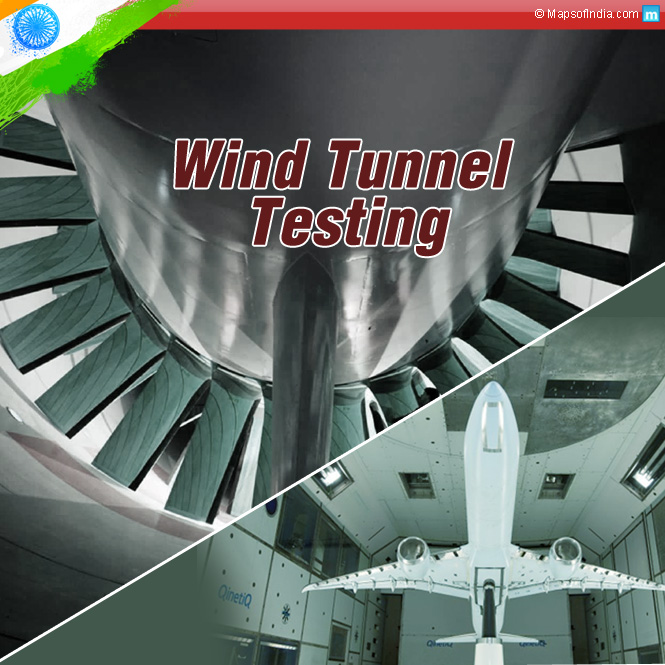In the 19th century, when aeronautic research was in the commencement phase, a new method of understanding the play and effect of air on moving objects in order to provide for building successful flying machines. Wind tunnels were suddenly the most sought after research tool to help engineers and scientists understand the play of aerodyamics in designing and building airplanes.
Wind tunnels were designed on the reverse paradigm of air forces playing on an object moving through a space with speed. When an object moves, the air around it is still relative to the object. In wind tunnels, the same effect was achieved by keeping the object stationary and blowing air past it at speed.
The initial proposals for wind tunnel testing were presented towards the development of planes specially during World War II. Large wind tunnels were built to study airplanes in free flight and measure the aerodynamic forces being applied on them, and this became a tool of strategic importance during the Cold war period when development of supersonic aircrafts and missiles was a sudden necessity for countries looking to achieve military advantage over rivals.
Wind tunnels eventually came into use to study the effects of wind on large man made structures or buildings, when they were to be built tall enough to present vast surfaces to the wind and their internal structures were required to be strong enough to withstand and resist the aerodynamic forces playing on these buildings.
Eventually, the applications of wind tunnel testing were brought to the world of automobiles, not only to determine the forces at play but also to understand and figure out ways of reducing the power required to move them on roads at a given speed. It was important to understand the interactions between the vehicle, the road and the wind all in relation to each other. In an actual situation, the road is in motion relative to the vehicle but the air is stationary relative to the road. In the wind tunnel the air is in motion relative to the road which is in turn stationary, relative to the vehicle. Some automobile testing wind tunnels also incorporate moving belts under the test vehicles in order to bring their test conditions as close to the actual driving situation as possible.
A typical wind tunnel setup consists of a huge air duct with circular cross section and the object under test, placed at the center of the duct. There is also a viewing port and an instrumentation setup for the airflow study. Air is blown into the tunnel using a series of fans since keeping just one single fan may not be able to generate the force required specially incase of a large diameter wind tunnel. To achieve the required speed with the given volume of air, the fans may be powered by stationary turbofan engines rather than just electric motors.
The fans create a highly turbulent airflow due to the motion of the fan blades and this upsets the accuracy of the measurements being taken. It is therefore vital to ensure that the air flowing through the tunnel is laminar and turbulence free. The use of closely spaced vertical and horizontal air vanes assures smooth and non turbulent air flow through the tunnel before it reaches the test subject.
The effects of viscosity require the cross section of a wind tunnel to be circular since in a flat-sided tunnel, there will be a much greater constriction in the flow in the corners of the tunnel that would cause the air to become turbulent. A circular cross sectioned tunnel ensures a much smoother flow of air.
The inner surface of the tunnel is required to have an extremely smooth finish in order to reduce surface drag and turbulence that would impact the accuracy of the testing. In order to further correct the minor drag induced into the airflow, the object is kept at the center of the tunnel with a buffer zone between the object and the tunnel walls.
The lighting in the tunnel is embedded into the surface of the circular walls of the tunnel and shines in through the window slits. This is done to ensure that absolutely nothing interferes with the flow of air through the tunnel towards the test vehicle, not even a single light bulb. Observation is carried out through transparent portholes with the windows curved with the slits in the curved surface of the tunnel.
Obviously, since air is transparent there are methods to study the flow of air around the object. Some tunnels use smoke and study the swirl patterns in the smoke being formed as it collides with the object. Some tunnels employ the use of millions of tiny little tufts adhered to the surface of the object and then study the variations in the swaying of tufts on collision with air and the patterns formed on the surface.
Wind tunnels are classified into five types depending on the flow speed, namely, low speed, high speed, supersonic, hypersonic, subsonic and transonic wind tunnels.
Wind tunnel testing has been one of the biggest breakthroughs in the design and engineering field of automotive manufacturing and will continue to define the forms that our cars take in order to battle the forces of air at high speeds.





